The protected house
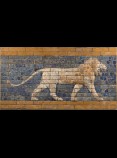
A relief with a lion on the Babylonian processional way. Babylon, now Iraq. Around 575 BC. Staatliche Museen zu Berlin, Vorderasiatisches Museum. Photo: Olaf M. Teßmer
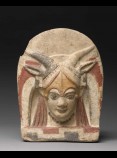
Antefix with a head of the goddess Juno Sospita (protector) Lazio, Rome, early 5th century BC.Musée du Louvre, Département des Antiquités grecques, étrusques et romaines, Paris. Photo. Musée du Louvre, Dist. RMN-Grand Palais / Hervé Lewandowski
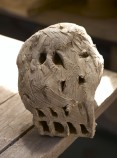
Papá Spiderman, Can Rabassa Brickworks , Vilafranca de Bonany (Mallorca), 2014. Miquel Barceló.Miquel Barceló Collection. Photo: © Agustí Torres, 2016
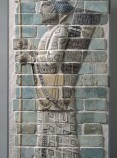
Glazed ceramic panel. Susa, now Iran. Achaemenid period, rule of Darius I, 522-486 BC. Musée du Louvre, Département des Antiquités orientales, Paris. Photo: Musée du Louvre, Dist. RMN-Grand Palais / Raphaël Chipault
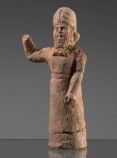
Charm or amulet. It depicts the Mesopotamian goddess Ninshubur. Babylon, now Iraq. Kingdom of Nabopolassar. Neo-Babylonian Empire, 626-605 BC
Staatliche Museen zu Berlin, Vorderasiatisches Museum, Photo: Olaf M. Teßmer

Tile Barcelona, 16th century . Apel·les Mestres bequest, 1951. Museu del Disseny de Barcelona. Photo: Guillem Fernández-Huerta
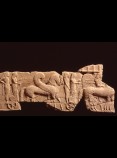
Wall decoration lastra stone with procession scene. Rome, 6th century BC. Antiquarium comunale, Roma. Photo: Collezione Antiquarium Comunale - Archivio Fotografico dei Musei Capitolini
Buildings were living organisms, and they had to be fed: Mesopotamian foundational stones had milk or butter added to them, as well as antiseptics like oil, wine and honey. However, despite the solidity of the structures, the buildings were at the mercy of spirits, and protection from them could not fall to a mere collection of solid bricks. They had to be armed with charms against the evil eye: armed guardians in Persian palaces, lions in Babylon’s processional way or the terrible face of the Gorgon placed high up on buildings in Greece, Etruria and Rome all sought to deter enemies, and the skull-shaped bricks moulded by Miquel Barceló are an evocation of these magical beliefs.
Bowls with spiral inscriptions were placed at the outside corners of homes to trap evil spirits, and in the Muslim world tiles with the Hand of Fatima protected dwellings and dwellers from on high, as did socarrat tiles placed on ceilings in Christian cultures.


